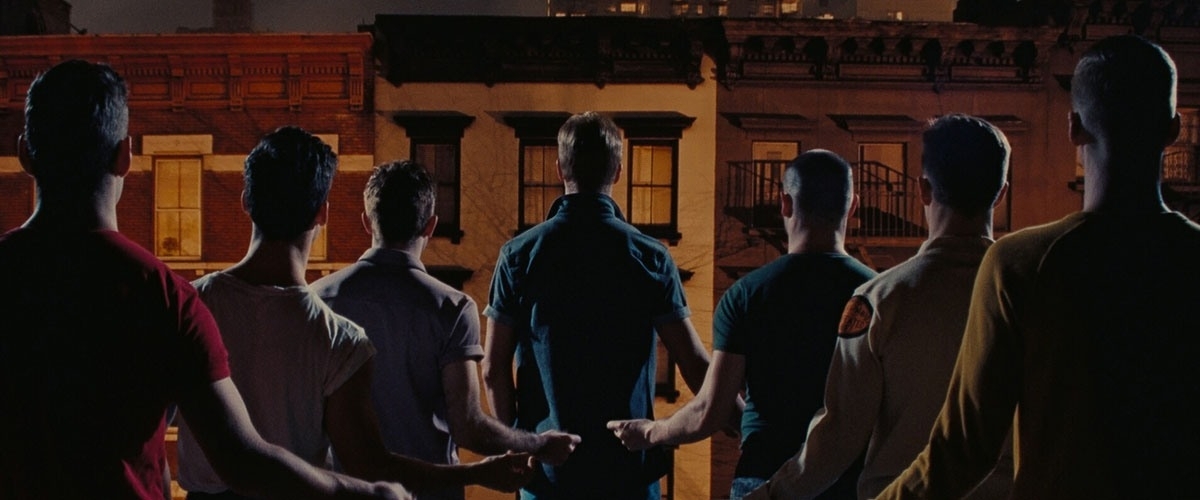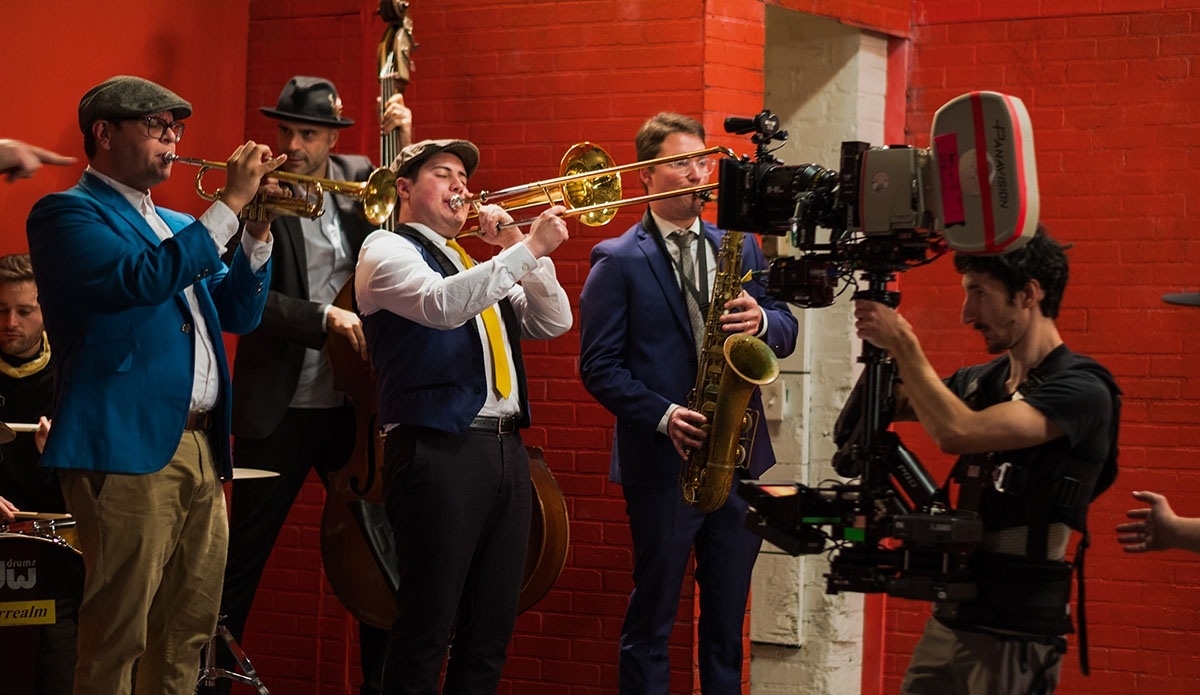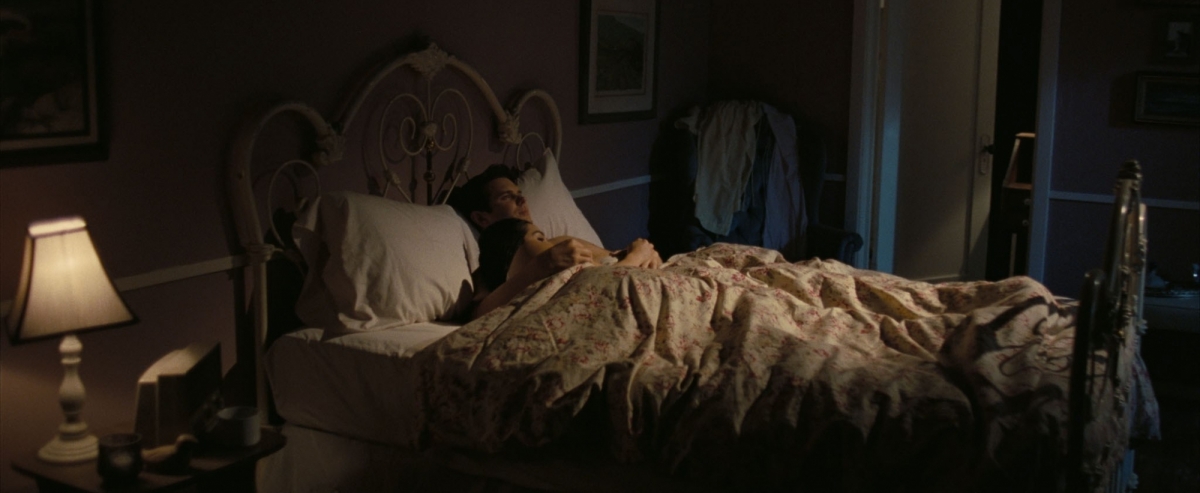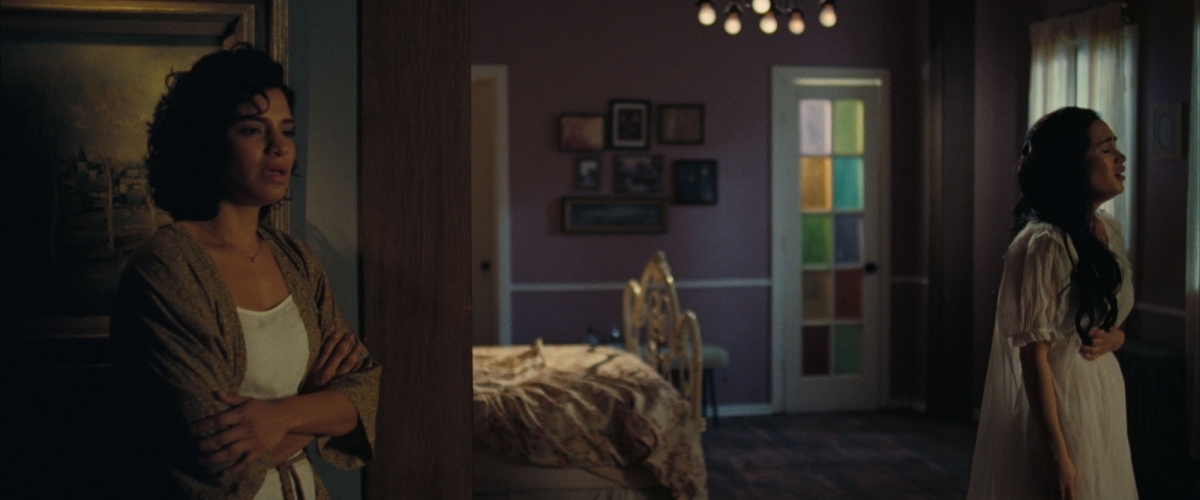Dear Mr. Spielberg

Costumes were originally worn by casts members from the 1950s production of "West Side Story" staged at Bishop Lynch High School in Dallas, Texas.
After fulfilling an ambition to return to Puerto Rico with a studio production and witnessing the devastation caused by Hurricane Maria to his homeland, cinematographer Rafael Leyva (The Oath) made a life-altering decision.
“I left in awe of the destruction and how hard life is down there. I promised myself that I would work even harder every day to be successful, help my family, and to work with the best.” The newly adopted mantra was put into practice when Leyva learned that Steven Spielberg (Lincoln) was going to remake West Side Story (1961), the Oscar-winning musical that reimagined Romeo and Juliet taking place in late 1950s New York City where Polish and Puerto Rican gangs were having a territorial feud.

Rafael Leyva directs the cast assembled for his recreation of the Mambo sequence.
“I wrote him a letter saying, ‘I’d love to be considered for second unit DP.’ That letter turned into me having a vision of doing a lens test for him and [his frequent cinematographer] Janusz Kamiński [Schindler’s List]. I figured that if I’m the only narrative Puerto Rican DP in Hollywood raised in the studio system and had a chance to work with the greatest filmmaker of all time, why not?”
The lens test evolved into a short film showcasing three key scenes from the original film that was entirely financed by Leyva, who served as a producer, director, and cinematographer. “What was frustrating is that I didn’t have an AD. I shot it in 10 hours. I was so tired that I went home to rest my feet for two hours, then I got into my car and dropped off the film at FotoKem.," Leyva said.
“I shot it on a Sunday, and the evening before, I get contacted by the producer of West Side Story, Kristie Krieger, telling me that they have my letter. I had just lost a trombone, trumpet, and an AD. The text was like good luck. It made me think of my favorite movie Jaws [where Spielberg had to deal with a constantly malfunctioning mechanical shark]. When there are problems onset, I’d always tell myself, ‘The shark is not working.’”

Rafael Leyva channeled the cinematography of Janusz Kamiński when shooting the first scene that introduces the Jets.
“My approach was to pretend that Steven was directing me,” explains Leyva who was assisted by Steadicam operator Stefano Ben and key grip Rudy Villalobos. “I know his movies so well and have such a profound connection with his pictures that I know all of the frames, how the camera moves, and when it’s the 28mm here or a 50mm there. I had watched the way he had shot The Post and two days before, I saw Whiplash by Damian Chazelle, which is cut in a way that resembles Jazz. The most closely Janusz-looking work that I did was the first scene of the Jets by the fences, and then everything else I wanted to show them Rafael Leyva.”
Other recreated moments include the Mambo high school dance sequence when Maria and Tony meet for the first time, and Tony confessing to Maria that he has killed her brother.

Rafael Leyva shot the footage ¾ underexposed, and pushed and developed 1 ½ stop to get a fantasia vivid Crayola colored textured look.
Leyva reunited with production designer Ricardo Jattan (The Perfect Host), who gave him his first job in the film industry 15 years ago. “I sold my personal gear to come up with the money for locations, insurance and set construction. I called Ricardo and told him what I was going to do. I visited his house in Malibu and we went through the set. Originally, I was going to do five scenes but there was no way to do it with the budget. Ricardo and his assistants donated their time. I was able to find a warehouse [to build the sets] at Fat Eyes Studio in Los Angeles thanks to a friend of my girlfriend. Ricardo and the art department moved in and were there for four days doing set construction. Choreography moved in the day before shooting where I had a pre-light with gaffer David Cronin and two electricians. I treated it as professionally as possible.”
The cast wore costumes with a historical theatrical connection to West Side Story. “My girlfriend’s mother is a film professor at Bishop Lynch High School in Dallas, Texas. The school hosted the original play, so they had all of the authentic costumes from the 1950s locked in a warehouse in Dallas. It was so amazing that they gave us access to them.”

For Tony’s and Maria’s bedroom scene Rafael Leyva went for the KODAK VISION3 500T Color Negative Film because of the incredible lowlight capability and richness of the film stock.
Critical support was provided by producer Ryan Westheimer (Good Kill). “Ryan saved my day. He said to me, ‘I’ll produce this for you. We can use my production company and I’ll get the insurance.’”
Choreographer Rebecca Bartlett and Leyva cast the project over a period of six days with Christina Milian (Be Cool) initially portraying Anita until a scheduling conflict arose. “Fortunately, the person who was second in command of the Sharks was Shakira Barrera from Netflix’s Glow and she’s amazing.”
A single Panavision Millennium XL2 combined with PVintage lenses were utilized to get the proper aesthetic and tone for the footage. “I favored the 35mm and 28mm because those to me were my Spielberg lenses,” states Leyva. “I went with old tungsten 10Ks through unbleached muslin that created a nice milky look that brought it back to the late 1950s.”

Christina Milian ("Be Cool") was initially going to portray Anita until a scheduling conflict arose and was replaced by Shakira Barrera ("Glow").
6,200 feet of film stock was purchased with just under 3,000 feet being shot for the production. “I had to shoot it on film because this was for Spielberg and he shoots on film which is the greatest format of all time. For Tony and Maria’s bedroom scene, I went for the KODAK VISION3 500T because of the incredible lowlight capability and richness of the film stock. KODAK VISION3 200T is an amazing film stock often used in Spielberg’s pictures, and there is a wide spectrum of great things that you can do with the film.”
“I shot three-quarters underexposed and pushed and developed one and a half stop because I wanted to get this fantasia vivid Crayola colored textured look,” explains Leyva. “I was so proud when I saw the negative because I had nailed the look I wanted.” Most of the color pallet was captured in-camera. “500T is colder so you definitely have to warm it up a bit more but other than that the two stocks are friendly with each other,” remarks Leyva. “Thanks to FotoKem, I was able to get Kostas, a well-respected pioneer and DI colorist who has worked with Christopher Nolan [Interstellar].”

A single Panavision Millennium XL2 combined with PVintage lenses enabled Rafael Leyva to get the proper aesthetic and tone for the footage.
The aspect ratio of choice was 2.40:1. “It has a cinematic scope and allows for compositions that emotionally align with ‘my Spielberg look.’ The scene I would like Steven Spielberg to watch is the moment when Tony and Maria fall in love at the high school dance. It’s short but I really enjoy that.”
Though the dream of getting to work with Steven Spielberg has yet to become a reality, the creative odyssey was well worth the effort as the Puerto Rican cinematographer displayed his ability to produce, create and execute a complex high-quality project within a short period of time and was able to get the attention of his all-time favorite filmmaker as well as those who work with him.